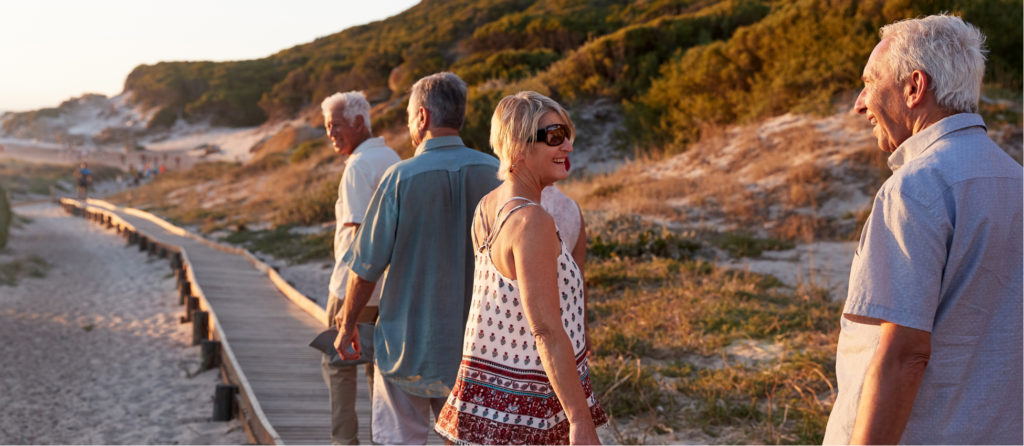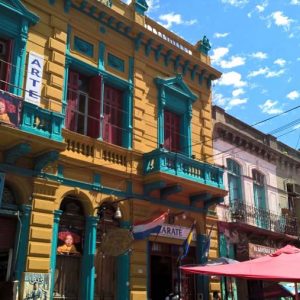I arrived in the city of Hamburg in September 2019 during the Cruise Days event. It was a very long time since my last visit, nearly 25 years ago, but my memory of the old town, the harbour, the river, the inner lake and all city attractions and landmarks were still fresh in my head. I always remembered Hamburg as a city of contrast, incorporating an urban historical metropolis blended in nature, surrounded by waterways, connecting docks and canals, landscaped with the tranquility of parks. 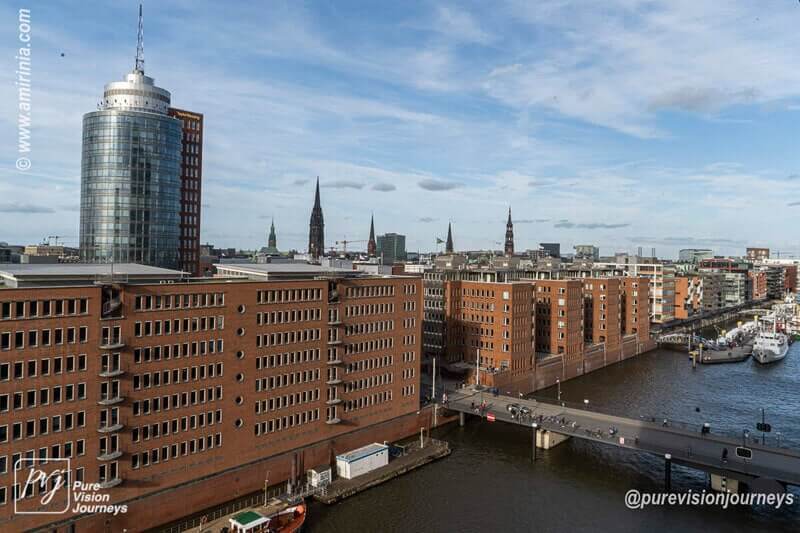 The city has a lively vibe with a mix of Romanesque, Renaissance and modern architecture, with an array of traditional German cafés and restaurants, boutique stores and luxury shops in its vibrant shopping streets and megastores.
The city has a lively vibe with a mix of Romanesque, Renaissance and modern architecture, with an array of traditional German cafés and restaurants, boutique stores and luxury shops in its vibrant shopping streets and megastores.
Hamburg is blessed with the Elbe River, flowing from the North Sea through the heart of the city, zigzagging within a large number of canals. Hamburg still stands as a major port city in the north of Europe, not only embarking cargo boats, but also welcoming massive cruise ships, carrying thousands of passengers.
As I strolled along the harbor, my memory was refreshed with new images. The harbour and surrounding area was no longer just a place full of sailors, boat workers, fishermen and the movement of heavy cargo, but it was also a vibrant setting buzzing with culture, art and music. It was only 18 minutes walking distance from my hotel, Premier Inn, to reach the Norderelbe (Northern Elbe) river flowing through the Port of Hamburg.
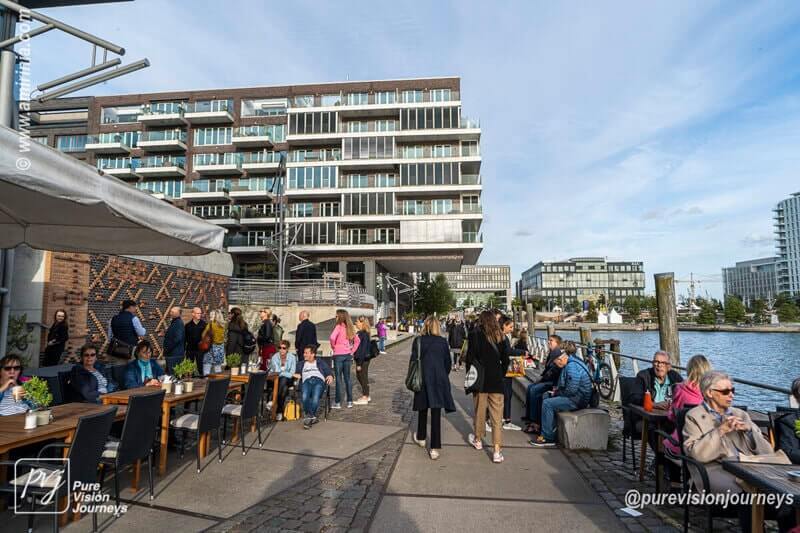 I was standing on the western part of HafenCity, in the heart of a new regeneration project located in Hamburg-Mitte district. This new urban development established on the Island of Grasbrook has transformed part of the old port of Hamburg to an upscale residential area and business centre with shops, cafes and restaurants along the Elbe River.
I was standing on the western part of HafenCity, in the heart of a new regeneration project located in Hamburg-Mitte district. This new urban development established on the Island of Grasbrook has transformed part of the old port of Hamburg to an upscale residential area and business centre with shops, cafes and restaurants along the Elbe River.
The setting of HafenCity reminds me of the development and regenration of the Docklands in London, Isle of Dogs. Unlike London Docklands, despite significant reductions in the importance of maritime trade through free ports in Europe, Hamburg’s port has still kept its old heritage alive and active in a new modern quarter. HafenCity incorporates the Speicherstadt, one of the largest historical warehouses in Europe, built of red brick, a UNESCO world heritage site, registered in 2015.
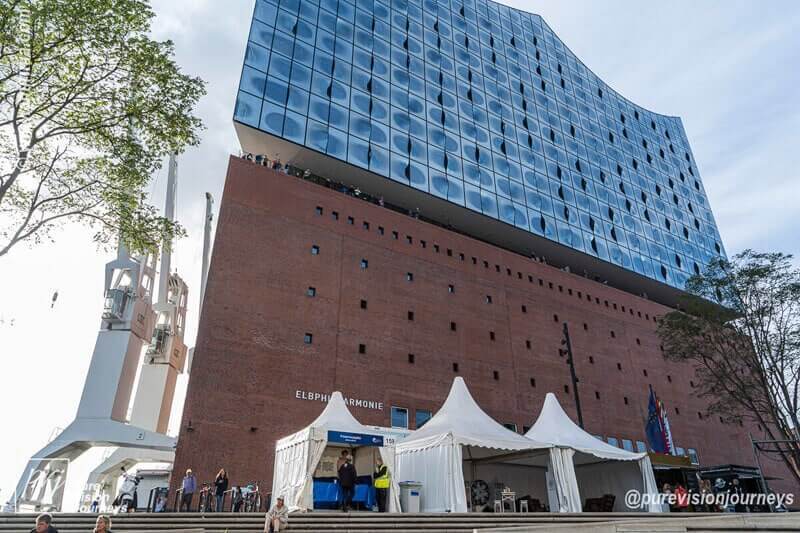 One of the iconic landmarks of HafenCity is the Elbphilharmonie, a modern concert hall with an advanced acoustic system. The modern glass building resembles a quartz crystal, with a height of 108 meters standing on top of an old warehouse. I took a curved escalator, in an 82-meter long tunnel, from the ground floor to reach the viewing deck on the 8th floor at the bottom of the glass structure. The observation platform circles around the building giving observers 360-degree views of Elbe River, the port, docks, canals and highlights of the city of Hamburg.
One of the iconic landmarks of HafenCity is the Elbphilharmonie, a modern concert hall with an advanced acoustic system. The modern glass building resembles a quartz crystal, with a height of 108 meters standing on top of an old warehouse. I took a curved escalator, in an 82-meter long tunnel, from the ground floor to reach the viewing deck on the 8th floor at the bottom of the glass structure. The observation platform circles around the building giving observers 360-degree views of Elbe River, the port, docks, canals and highlights of the city of Hamburg.
At the top of the Elbphilharmonie Plaza, I could see the cruise ships mooring on one side of the Elbe River and cargo containers loaded on the other side of the river along docks. I was curious to learn more about the transformation of the Hamburg Harbor, and to explore more details about the working environment inside the port. 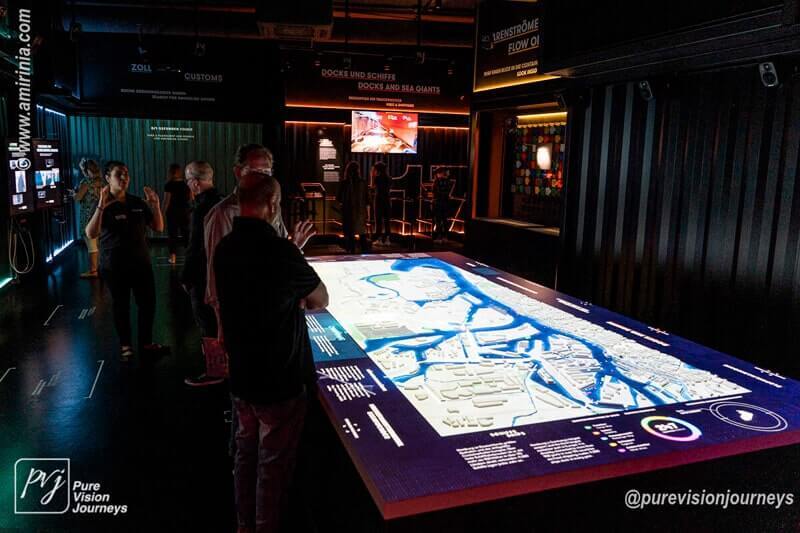 The Discovery Dock just opposite the Elbphilharmonie is an interactive museum, exhibiting the life and activities in and around Hamburg port. My visit to Discovery Dock was very informative and interactive. I experienced the different aspects of activities in the port such as loading, offloading, customs and other logistics, using monitors and interactive systems. The museum provides projections and 3D models to display the past and the present of Hamburg port. There are several stands with an interactive video of experts and stations equipped with VR headsets to load shipping containers virtually.
The Discovery Dock just opposite the Elbphilharmonie is an interactive museum, exhibiting the life and activities in and around Hamburg port. My visit to Discovery Dock was very informative and interactive. I experienced the different aspects of activities in the port such as loading, offloading, customs and other logistics, using monitors and interactive systems. The museum provides projections and 3D models to display the past and the present of Hamburg port. There are several stands with an interactive video of experts and stations equipped with VR headsets to load shipping containers virtually.
In the evening, we had dinner at Tobias Strauch restaurant on the waterfront opposite the Maritime Museum in Magdeburger Hafen. I enjoyed the atmosphere of the waterfront restaurant and the taste of a variety of Mediterranean starters and a delicious marinated fish fillet. After dinner, we took a boat just outside the restaurant. It was a dark night, navigating in the canals under moonlight. It was an amazing experience to cross the quiet docks through high rise warehouses on both sides covered in a magical blue light. 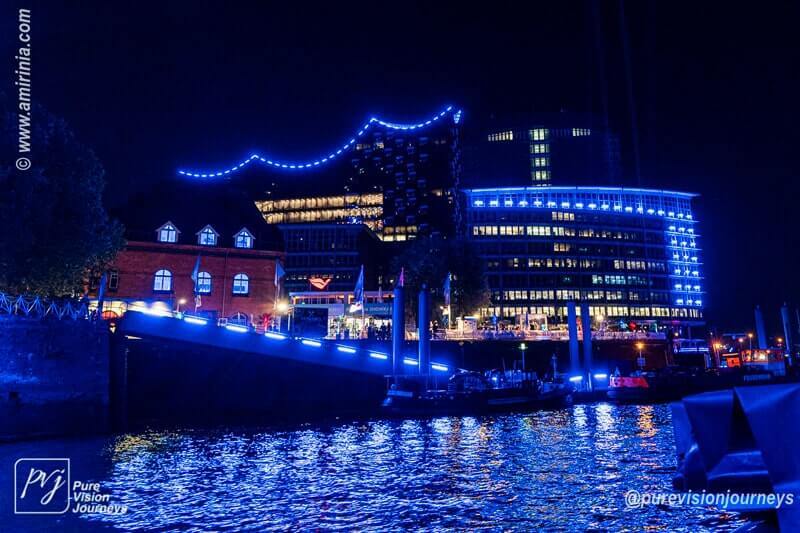 The installation settings were created under an art project called, ‘Blue Port Hamburg’, by the artist Michael Batz. The Hamburg harbour and city’s beautiful landmarks were illuminated in blue after dusk for ten days during the Cruise Days event.
The installation settings were created under an art project called, ‘Blue Port Hamburg’, by the artist Michael Batz. The Hamburg harbour and city’s beautiful landmarks were illuminated in blue after dusk for ten days during the Cruise Days event.
We passed the docks and crossed under bridges, viewing the new converted hotels, residential apartments and office blocks, until we reached the Elbe River. We continued our navigation past small and large boats; and massive cruise ships, wondering for some time in the middle of the river. We ended our nightly tour on the bank of the Elbe River.
More information
For more information about Hamburg visit www.hamburg-travel.com
To see more of Reza’s images of Hamburg go towww.amirinia.com/germany
Images and story © Mohammed Reza Amirinia
